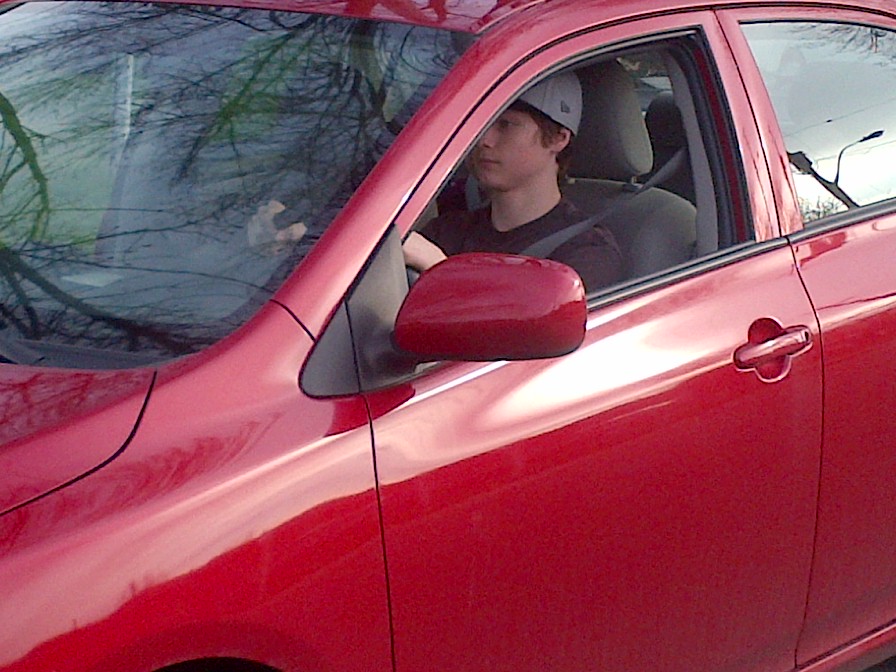Can experience be taught?
 I enjoy statistics…sometimes. I enjoy looking at statistics while watching sports on TV. It doesn’t matter whether it’s football, hockey, basketball or baseball. I enjoy seeing how well players and teams are doing during that game, season or over their career. Even though I enjoy looking over statistics when it comes to sports, there are also other statistics I’m interested in – injury and fatalities related to driving. When it comes to these statistics, they can get better.
I enjoy statistics…sometimes. I enjoy looking at statistics while watching sports on TV. It doesn’t matter whether it’s football, hockey, basketball or baseball. I enjoy seeing how well players and teams are doing during that game, season or over their career. Even though I enjoy looking over statistics when it comes to sports, there are also other statistics I’m interested in – injury and fatalities related to driving. When it comes to these statistics, they can get better.
Despite the year we’re looking at, teenage drivers are the lowest percentages of drivers in each age bracket. In Canada for example, teenage drivers represent roughly 5% of all drivers, yet they represent almost 15% of all fatalities. In reality, the percentage of drivers should be comparable to the percentage of fatalities, but they aren’t balanced in this age bracket. When I’m training teenage drivers, I ask why this is the case. They’re the ones who tell me it’s from lack of knowledge and experience.
The age bracket of 20-24 year olds are also risks. Drivers in this age bracket represent close to 10% of the drivers across Canada, but close to 20% of all auto related fatalities. Wouldn’t drivers at this age group be safer? Shouldn’t this also be balanced with 10% of the driver’s licensed and 10% of the fatalities?
{Added stats from Transport Canada https://www.tc.gc.ca/eng/motorvehiclesafety/tp-tp3322-2004-page11-701.htm and https://www.tc.gc.ca/eng/motorvehiclesafety/tp-1317.htm#3 }
Although people 20-24 may seem to be more mature than teens aged 16-19, not everyone learns to drive when they’re teens. Maturity isn’t the main factor here. Lack of experience weighs a big part when it comes to collisions, injury and death with new drivers. The combined age groups of 16 to 24 represents almost a quarter of all fatalities across Canada. Although these are statistics from Canada, many other jurisdictions have similar statistics. With most of this contributed to lack of experience is there anything we can do to speed up experience?
Educating yourself with proactive responses can mentally prepare you to make better driving choices when the time comes. For example, knowing what your options are if a driver is approaching from behind you too fast to stop in time will be helpful before a rear crash happens. The same thing can be said if you knew how to determine if another vehicle was about to run a red light before you entered the green light. It mentally prepares you to do something before it happens. This is something I’m trying to do with this site – provide you with experience with thinking as a driver.
Think of it like first aid training. You do all that training just in case someone needs your help. It’s proactive training. There are many things you’re mentally ready for, even though it may never happen. Maybe drivers aged between 16 and 24 could do this and help reduce injury and fatalities. Maybe.
When I was a judge on Canada’s Worst Driver I found many of the drivers were simply reacting to situations without really giving it much thought ahead of time. They weren’t mentally prepared to drive and handle any potential problems they could face. That was a large reason to why they crashed. I was just glad they weren’t injured or worse.
Driving is more than pressing the gas and going. Driving safely is far more mental than it is physical for most drivers. For any driver, learning how to mentally prepare yourself as a driver will not only allow you to gain experience thinking like a driver, but it will give you an edge and allow you to make better choices when and if the time comes. It may even allow you to avoid collisions and not become a statistic.